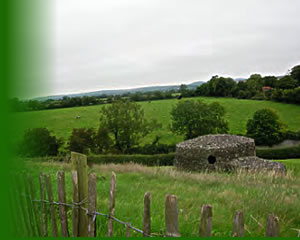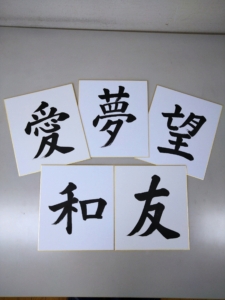
Aftermaths
The 2024 Conference of
the International Association for the Study of Irish Literatures

The 2024 Conference of
the International Association for the Study of Irish Literatures
Kaoru Matsumoto, Kyogen Actor of Okura School, who belongs to the renowned Shigeyama Sengoro Troupe in Kyoto, will give a workshop of kyogen. Kyogen is a traditional Japanese comedy which was established about 400 years ago together with more serious and tragic Noh plays. Kyogen and Noh are performed together in a program and kyogen releases the tension brought about by Noh and lets the audience relaxed. Matsumoto will explain what kyogen is and the participants, using their own bodies, will experience movements and vocalization of kyogen, such as the idiosyncratic way of laughing. Participants will also learn how to use props like a special fan which is only used in kyogen. This workshop will provide the essence and the integrate image of kyogen.
In addition, participants have an opportunity to take a close look at Noh masks created by Teiichi Iba, Noh mask artist.
More about Shigeyama Sengoro Family (Japanese language only), and Noh masks made by Teiich Iba.
The participants are invited to Akitsu-kai’s calligraphy class to observe and experience the lesson themselves. Lesson includes writing one kanji character on ‘Shikishi’ (a special kind of Japanese card paper often used for calligraphy). Before or after your own calligraphy experience, you can observe the regular class and view some of the work by students and teachers. There will be two trips to Akitsu-kai, one at 15:30 and the other at 17:00, and each lesson experience is open to the first 10-12 people who enroll.

©Akitsukai
*Akitsu-kai(あきつ会)
Akitsu-kai was founded in 1970 by Kōsei Nakata (Kan’ichi Nakata). He had been an instructor of calligraphy at the Gakushuin Girl’s Junior & Senior High School since the early Showa period, and from 1931 (Showa 6) to 1944 (Showa 19), he was appointed as an instructor of calligraphy for the female staff of the Empress’s Palace in the Imperial Household Ministry.
Akitsu-kai is named after the ‘Akitsu-shima’ (蜻蛉島; island of Akitsu), which appears in The Man’yōshū (万葉集; literally ‘Anthology of Ten Thousand Leaves’). ‘Akitsu’ means ‘dragonfly’ and, in earlier times, Japan was known as Akitsu-shima.